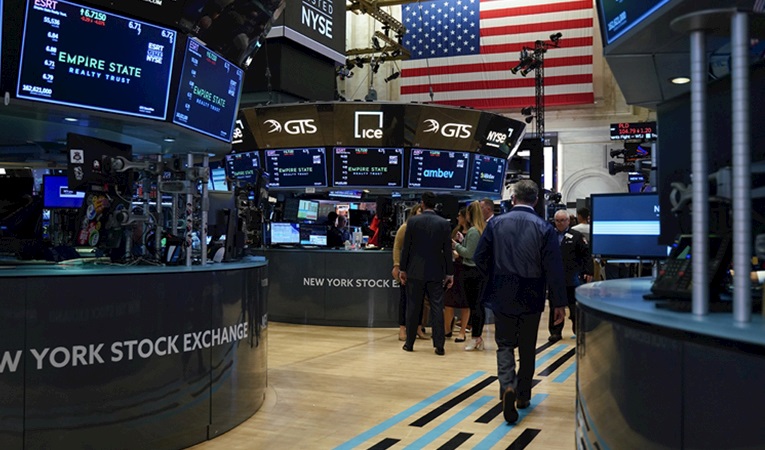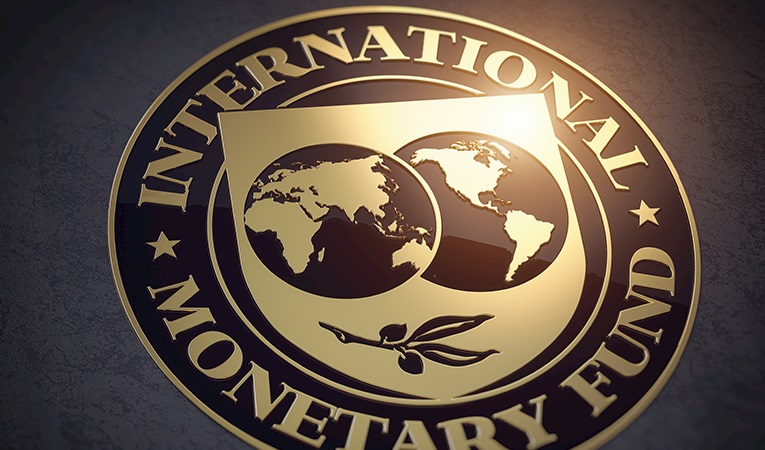
-
BIST 100
 10922,86%-0,52En Düşük10815,65En Yüksek10945,24
10922,86%-0,52En Düşük10815,65En Yüksek10945,24 -
DOLAR
 42,44%0,17Alış42,4310Satış42,4517En Yüksek42,4510
42,44%0,17Alış42,4310Satış42,4517En Yüksek42,4510 -
EURO
 48,94%-0,01Alış48,8834Satış48,9983En Yüksek49,0842
48,94%-0,01Alış48,8834Satış48,9983En Yüksek49,0842 -
EUR/USD
 1,15%-0,09Alış1,1515Satış1,1516En Yüksek1,1555
1,15%-0,09Alış1,1515Satış1,1516En Yüksek1,1555 -
ALTIN
 5547,99%-0,11Alış5546,42Satış5549,56En Yüksek5595,35
5547,99%-0,11Alış5546,42Satış5549,56En Yüksek5595,35
-
BIST 100
 10922,86%-0,52En Düşük10815,65En Yüksek10945,24
10922,86%-0,52En Düşük10815,65En Yüksek10945,24 -
DOLAR
 42,44%0,17Alış42,4310Satış42,4517En Yüksek42,4510
42,44%0,17Alış42,4310Satış42,4517En Yüksek42,4510 -
EURO
 48,94%-0,01Alış48,8834Satış48,9983En Yüksek49,0842
48,94%-0,01Alış48,8834Satış48,9983En Yüksek49,0842 -
EUR/USD
 1,15%-0,09Alış1,1515Satış1,1516En Yüksek1,1555
1,15%-0,09Alış1,1515Satış1,1516En Yüksek1,1555 -
ALTIN
 5547,99%-0,11Alış5546,42Satış5549,56En Yüksek5595,35
5547,99%-0,11Alış5546,42Satış5549,56En Yüksek5595,35
- Anasayfa
- Haberler
- Tüm Haberler
- The Changing Face Of The Chinese Market
The Changing Face Of The Chinese Market
“I have been coming to China regularly for three years and every time I come I find myself faced with a completely different country.” This is how a Turkish businessman who does business in China d...
“I have been coming to China regularly for three years and every time I come I find myself faced with a completely different country.” This is how a Turkish businessman who does business in China describes his impressions. But everyone else thinks the same about the incredible dynamism and what in recent years has been the fastest growing market. Everything is undergoing remarkable change, from demographics to consumer trends, entrepreneurship and foreign investments.
In order to observe this change we accompanied the Turkish Businesspersons’ and Industrialists’ Association (TÜSİAD) delegation on its first ever official visit to Beijing and Shanghai. We participated in meetings with representatives of important institutions such as the China Council for Promotion of International Trade (CCPIT), the China General Chamber of Commerce (CGCC), the China Enterprise Confederation (CEC), the China Federation of Industrial Economics (CFIE), the Shanghai Federation of Industry and Commerce, the World Bank, the European Commission. We visited the free trade zones and economic development regions around Shanghai. We tried to understand the change in China. Here are the main elements of this change:
1. FULL SPEED AHEAD FOR THE MARKET ECONOMY
However much China may be governed by the Communist Party, when you arrive in Beijing you find yourself in a capitalist country. From luxury shopping centres to five star hotels, from the MacDonald’s on all the streets to the skyscrapers in the city centres and the signs advertising multinational foreign companies, everything is identical to a European city.
Even though a significant proportion of the economy is still controlled by the state, there is considerable support for entrepreneurship in the country. In major cities such as Shanghai the private sector predominates. Foreign businessmen operating in the market say that in terms of regulations doing business here is no more difficult than in any other country.
The general appearance of the Chinese economy can be summarized in the phrase: “state-controlled infrastructure, market-driven superstructure”. State control in this sense is similar to what happened in Turkey when, from the 1930s onwards, a planned development gave way to the private sector. The market interactions are based on the capitalist model and there are great business opportunities for companies from every sector which focus on the consumer, particularly in retailing.
2. THE RISING NOUVEAU RICHE
One of the most eye-catching features of the change taking place in China is the rise of the nouveau riche. More than 65 million people have an annual income in excess of US$10,000. Foreign companies which are targeting the Chinese domestic market are focusing their efforts on this segment of the population. The giant shopping malls even include retail outlets such as E. Zegna, Louis Vuitton, Dior, Gucci, Prada, Cartier, Bvlgari and Mango.
The most important aim of this segment of population, whose wealth can be measured in millions, is the acquisition of luxury foreign brands. The consumption of luxury goods in China has reached US$2 billion a year. This figure is expected to rise to US$6-8 million in 2015. According to forecasts by Ernst and Young, the market for luxury products will grow by 20 percent a year until 2008 and then fall to 10 percent from 2015 onwards. China hosts two luxury goods trade fairs every year. The products promoted at these fairs range from private jets to US$31 million villas, jewelry and private islands.
3. THE DISPARITY IN INCOME
Of course, as everywhere else, this great wealth is rising amid widespread poverty. Wealth is concentrated in the major cities of China and to the west of the country the poverty reaches unbelievable dimensions. One Chinese citizen we spoke with said: “The income gap in the country is widening. The rich are becoming richer and the poor are becoming poorer. There is a huge disparity in income between regions. Those who live in the west earn US$1 a day. In the major cities that is the hourly wage.”
The Chinese government is aware of the dangers posed by this disparity. The Chinese economy has developed very rapidly based on the export oriented economic model. David Dollar, the World Bank Country Director for China, says: “It is one of the most important US export markets. But we know that the US has a very high trade deficit. For this reason, the rate of growth of Chinese exports, which has been running at more than 20 percent a year, will slow. This is why they have to give greater importance to the domestic market.”
The second great concern resulting from the disparity in income is social unrest. One of the main worries is that the poor could hold strikes and scare off foreign investors.
4. CONSUMPTION IS RISING
The massive oversupply of Chinese products means that domestic consumption needs to increase. It will also be the urban population which will serve as the dynamo for this Because in rural areas where there is greater social security and more concerns about the future the rate of savings is still high at over 50 percent. The urban population does not see anything wrong with spending a large proportion of what they earn. Urbanization brings with it a reduction in the savings rate.
Cai Wen from the China General Chamber of Commerce Information Department says that this is the reason why the retail sector is very lively: “Retail sales have reached US$563.5 billion in the cities. The sector is growing by more than 10 percent per year.” He notes that Wal-Mart has opened its 56th store in China. It is not just Wal-Mart, major retailers such as Carrefour are all in China. A few months ago IKEA opened its largest store in Asia in Beijing.
In the cities there is massive interest in durable consumer goods and automobiles. Even though there are currently only 24 automobiles to every 1000 people this figure is expected to rise to 40 by 2010. This means that there are 55 million vehicles on the roads and that annual production will rise to 9 million in 2010.
5. COMPETITION IS VERY FIERCE
China is one of the countries where competition is fiercest in several sectors. Dr. Li Ming-Xing, the Director of the International Department at the China Enterprise Confederation, says: “Competition is very fierce here. For example, you see specific brands on the automobile market in Germany or Japan; whereas you can find all of the brands in China.” This fierce competition forces companies to look for creative marketing methods. China is one of the countries in which advertisements are most used. According to a study by Nielsen, advertising expenditure rose by 25 percent to US$410.3 billion in the first quarter of 2006. Noyan Rona, Guaranti Bankası’s Shanghai Representative, explains the situation as follows: “We are in a country with one of the highest rates of advertising use in the world. In fact, there is advertising pollution here. Fr example, 40 percent of the advertisements in Shanghai city centre have been banned on the grounds that they are polluting the city. Firms look for interesting methods. You receive an electricity bill at home and out drops an advertising brochure.”
Advertising is very widespread, as are one to one marketing and telephone marketing. Other promotional tools, such as gifts, offering free samples, and ‘buy one get one free’ s are very common. Marketing methods here are very aggressive and very effective. According to the statistics for 2004, the highest advertising revenue came from the pharmaceuticals sector. This was followed by cosmetics, bathroom sets, clothing, automotives and the real estate sector.
6. GOVERNMENT PRECAUTIONS
China manages economic development through five year plans. The most recent plan includes two important targets. The first is to decrease regional disparities. This will both reduce potential social problems and result in some of the wealth which is concentrated in the east of the country been diverted to other areas.
David Dollar, the World Bank Country Director for China, says in this context that he has observed that there has been some movement and continues: “In areas just in the interior of the southeast the social security system is very strong and the labor market is not flexible. But when you go to a city you have never heard of before you see huge factories and booming free trade zones. The private sector is doing business here. The workers are on contracts.”
Another of the priorities of the new five year plan is to develop the services sector and high added value sectors.
China Enterprise Confederation Deputy Director General Xia Zhonghua explains: “We are concentrating on developing high added value sectors and high tech sectors. From now on we shall concentrate on these two areas in particular. The first is a policy of openness, the second technological creativity.:
Independently of the five year plan, another issue on the government’s agenda is the addressing of problematic sectors. One of these is banking. New amendments have been introduce to restructure this sector. One of the most important steps to be taken is the reduction of non-performing loans.
7. THE AIM IS TO BECOME THE ‘CAPITAL OF THE WORLD’
The dynamism that meets you at every step you take in Beijing is stunning. Construction machinery and cranes are working non-stop. It is almost as if the city is being rebuilt. This is partly a product of the economic dynamism of the city. But there is a more important reason to which the Chinese, quite naturally, give great importance; and that is the fact that in 2006 the Olympics will be held in Beijing.
The reasons for the dynamism in Shanghai are equally important. The preparations for the 2010 Shanghai Expo have started already. The inclusion of Shanghai in the Formula 1 calendar has given a significant boost to its ambition of becoming ‘the capital of the world’. The giant ‘Shanghai of the Future’ model in the Shanghai Urban Planning Centre, shows that in 2010 Shanghai will have a profile like New York, London or Brussels.
David Hong, Assistant General Manager for the Shanghai Waigaoqiao Free Trade Zone Marketing and Services Centre, explains that the economic infrastructure is already in place: “Shanghai has a population of 19 million and makes a contribution of US$113 billion to GDP each year. Shanghai also accounts for 38 percent of China’s total exports and 44 percent of its imports. At the same time, the city is also a very important venue for trade fairs. It hosts 400 major trade fairs every year. There are more than 90 foreign financial institutions here. Shanghai has the world’s largest cargo port. In 2005 throughput reached 443 million tons. It has the second largest container port in the world And the city’s two airports connect it to the rest of the world.”
Türkiye ve dünya ekonomisine yön veren gelişmeleri yorulmadan takip edebilmek için her yeni güne haber bültenimiz “Sabah Kahvesi” ile başlamak ister misiniz?






